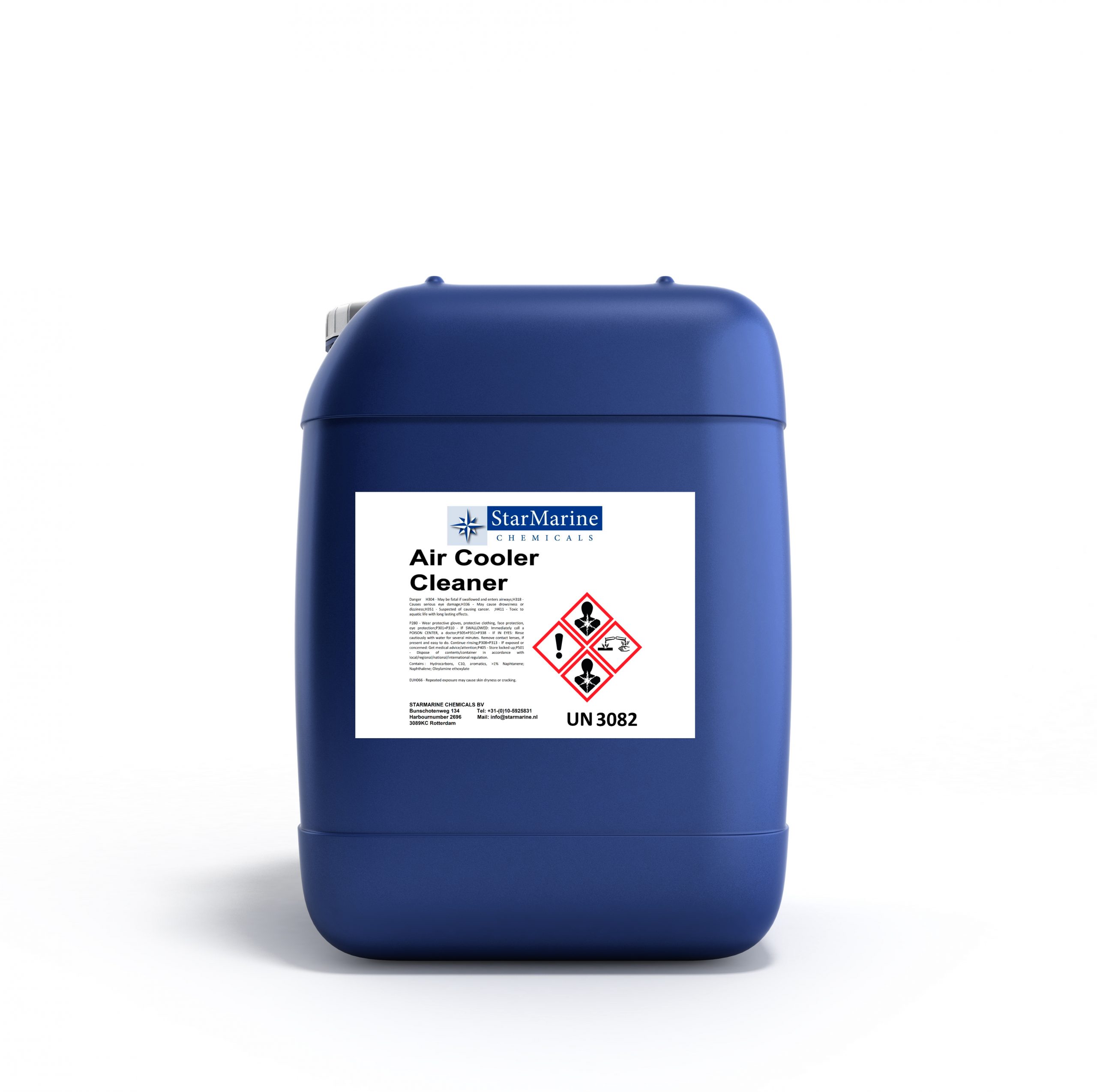Air cooler cleaner
For manual and „in service“ cleaning of Diesel Engine charge air coolers.
- Effective removal of all contaminants.
- Anti corrosive properties.
- No impact on cylinder oil films.
- Completely combustible in the cylinder.
- Dosing systems available.
Packing: 25L pail
Additional information
Properties
Light yellow coloured neutral fluids, which emulsify with water and are safe in contact with all metals.
|
Specific Gravity (20°C) |
0.91 |
|
Flash point PM CC |
>62 °C |
Application of use
Immersion bath
Dependant on design, the cooler is flooded with AIR COOLER CLEANER immersed in a tank full of product. The product should be heated to approx. 50°C and agitation provided with an air line. After 2 hours, drain off and flush well with water, followed by drying with an air line.
Circulation method
Some designs of cooler can be circulated „in situ“. In this case a pump tank and pipe system is fitted permanently or connections are provided for connecting a temporary circuit. The system should be filled with AIR COOLER CLEANER circulation carried out for 2 – 4 hours at a temperature of upto 50°C.
After cleaning the cooler should be thoroughly flushed with fresh water and dried with an air line.
Note: Both cleaning methods benefit from heat of up to 50°C and cleaning times can be reduced or extended dependant on temperature and degree of fouling.
Direct injection
AIR COOLER CLEANER has the approval of the majority of major manufacturers for use either in their own design of „in service“ cleaning system or other recognised systems provided by suppliers.
Injection systems
StarMarine offer a range of newly developed easy to operate manual system
Safety Aspects
Classification according to Regulation (EC) No. 1272/2008 [CLP]Mixtur
- Serious eye damage/eye irritation, Category H318 1
- Carcinogenicity, Category 2 H351
- Specific target organ toxicity — Single H336 exposure, Category 3, Narcosis
- Aspiration hazard, Category 1 H304
- Hazardous to the aquatic environment — H411 Chronic Hazard, Category 2


 Download
Download